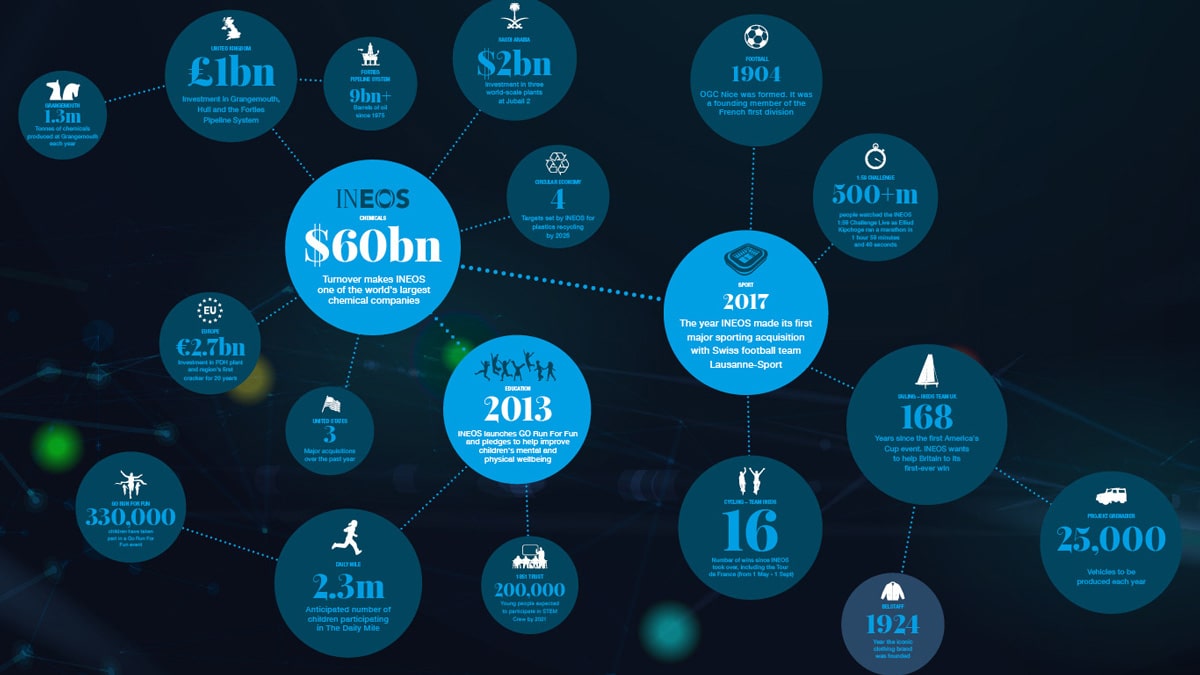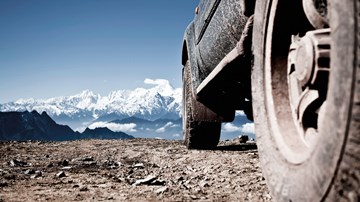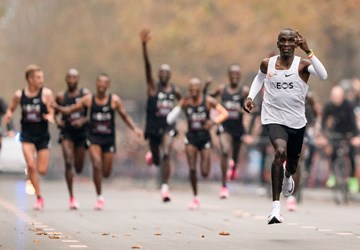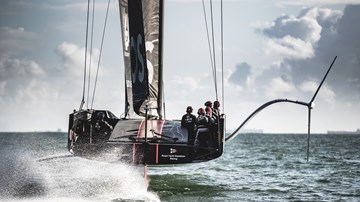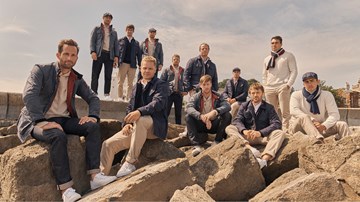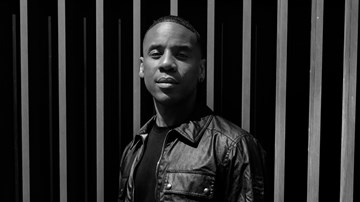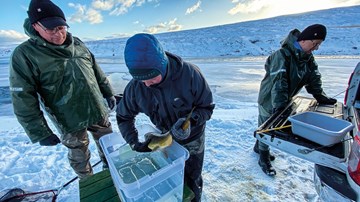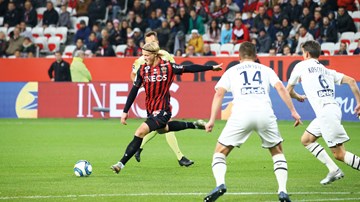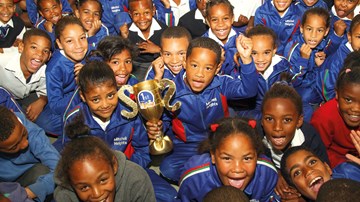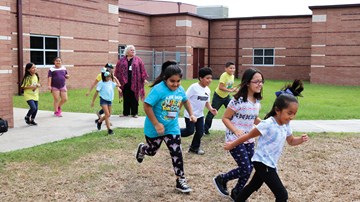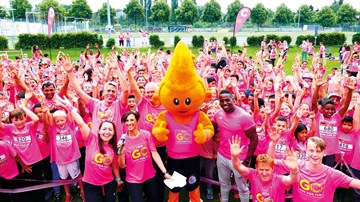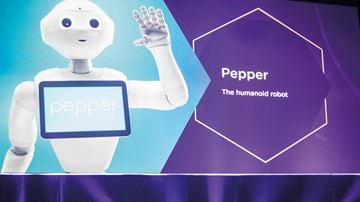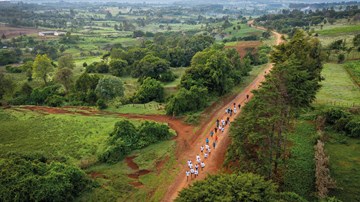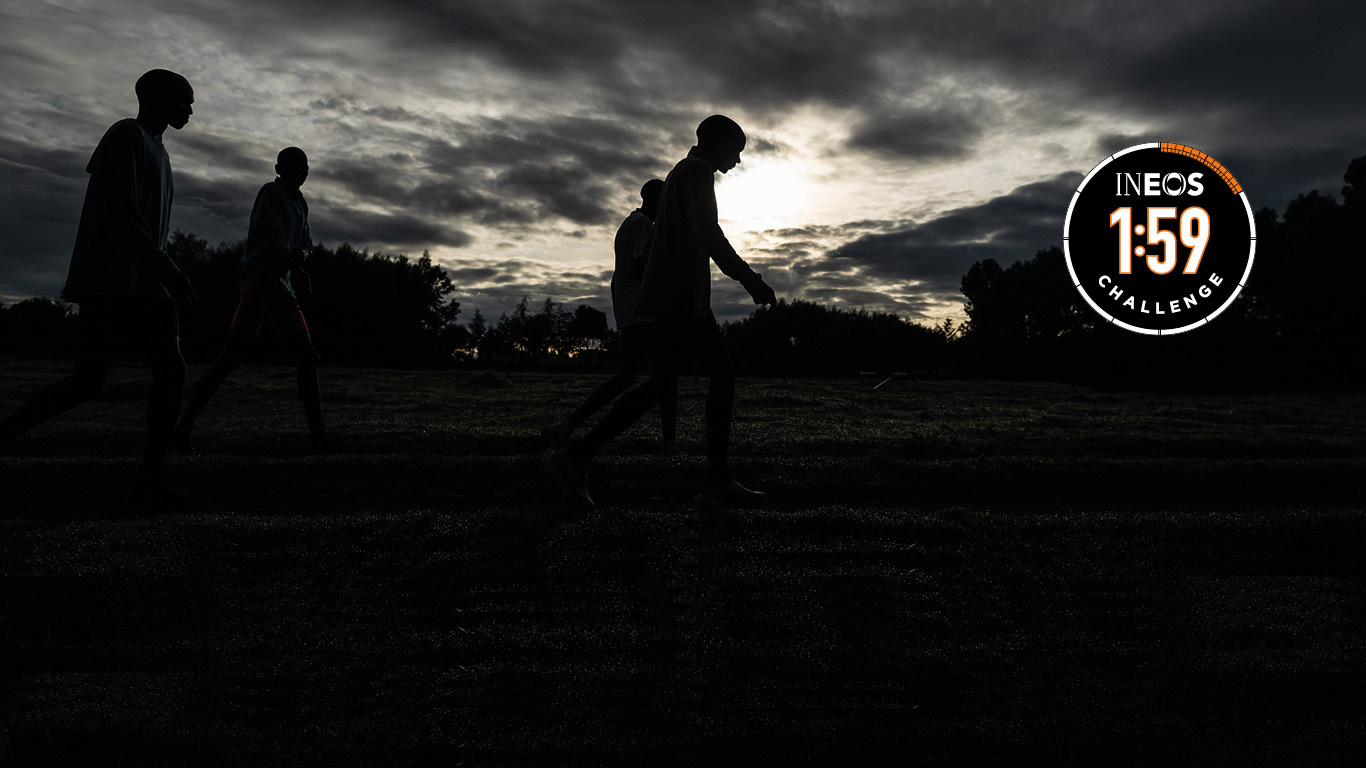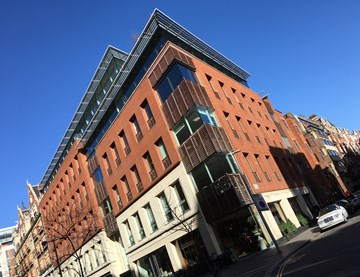Sustainability through innovation
INEOS are investing in hundreds of active projects on carbon, hydrogen, heat & power, renewables, resources and waste
Renewable raw materials, made from sustainable wood-based waste are being used to replace traditional raw materials originating from oil and gas based products. The resulting polymer products from INEOS contribute to measurable Greenhouse Gas (GHG) savings.
Innovation is not just about having ideas. It’s about making ideas happen...
THOMAS Edison – arguably the greatest inventor in history – had some sound advice for those wanting to follow in his footsteps. "The value of an idea," he said, "lies in the using of it." As a company, INEOS excels when it comes to making great things happen. Every day.
Pete Williams, INEOS’ Group Technology Director, is in no doubt about that.
“INEOS continues to improve its sustainability, and its products help to improve the sustainability of many things we all take for granted in our day to day lives,” he said. “We want to be delivering valuable products to customers not just today but also in 10, 20, 30 years and beyond. So as a growing world sets its target to move towards net zero carbon emissions, INEOS will adapt and move with it to meet its needs, to overcome its challenges and seize new opportunities.”
To do this, innovation is key. At INEOS Innovation and sustainability are inextricably linked.
INEOS products already makes a powerful contribution to a more sustainable world by making possible a wide range of products for various industries, including automotive, healthcare, medicine, aerospace, renewable technologies, construction, electronics, electrical and household goods, and packaging.
Independent reports calculate that if polymers were to be replaced to the maximum level by the next best alternatives, greenhouse gas emissions would more than double.
“Looking forward, we are innovating to make an even stronger contribution,” said Pete.
Every day the company is focused on improving the efficiency of its sites and reducing emissions.
More efficiently-run plants are not only better for the environment, but they can create savings which can then be reinvested elsewhere.
The polymers INEOS produces contain mainly carbon. “We see our job as looking after the carbon,” said Pete. “We see it as using it as efficiently as possible, and recovering and re-using it as much as possible.”
INEOS has already launched a range of new polymers containing recycled plastics.
It is also looking at how to use bio-sourced carbon – carbon from natural sources rather than oil and gas – and has launched new bio-products, such as Biovyn. “All these reduce emissions further,” said Pete.
But to be truly sustainable INEOS must make sufficient profit so it can re-invest in new state-of-the-art manufacturing techniques and equipment.
“The analogy is that we need to be able to replace the old, inefficient car of 30 years ago with a new, much more efficient version,” said Pete. And that’s what INEOS is now doing.
In January this year INEOS announced it planned to spend €3 billion on a new cracker and propane dehydrogenation complex in Antwerp.
The investment, described by Chairman Sir Jim Ratcliffe as the largest of its kind in Europe for more than a generation, will enable a step change reduction in emissions associated with the manufacture of olefins, the key intermediate for a broad range of products used in automotive, construction, transportation and medical applications.
In summary, INEOS intends to remain sustainable and meet the challenges of the changing environment through innovation.
And it doesn’t matter where the ideas come from. “Good ideas can come from anywhere,” said Pete. “Our staff, our customers, our supplies.”
Those ideas can be quickly shared through efficiently-run networks, such as the Carbon and Energy Network.
Greet Van Eetvelde, INEOS’ head of energy and innovation policy, said INEOS is involved in hundreds of active projects on carbon, hydrogen, heat & power, renewables, resources and waste.
“Many of them are innovation projects linked to universities and other organisations as we seek to harness expertise and work with cross-sector businesses to optimise the significant benefits from our industry and beyond,” she said.
Those in-the-know are already aware of what the chemical industry has done to make cars and planes lighter and more fuel efficient.
They understand that without the chemical industry, there would be no wind turbines and solar panels.
They recognise the important role the chemical industry has played in bringing water to some of the poorest parts of the world.
“We know what we have done, what we are doing and what we can do to create a low carbon economy,” said Pete. “The difficulty, as always, is changing the public’s perception of what we do.”
Innovations in plastic recycling
INEOS is at the heart of many, new innovative products thanks to its forward-thinking and dynamic approach.
INOVYN fuels new, greener generation of PVC
SINCE its invention more than 100 years ago, PVC has been made predominantly from fossil fuels. Some countries, including Brazil, have used sugar instead as a starting material but that’s also not been without controversy.
“Europe is especially sensitive to using land for anything other than growing crops to feed people,” said Dr Jason Leadbitter, Sustainability & Corporate Social Responsibility Manager at ­INOVYN.
But times are changing – and ­INOVYN is at the heart of one monumental change.
Instead of purely gas and oil, the INEOS-owned company has starting using biomass to make its latest generation of PVC. The beauty of this, as a raw material, is that it is not only renewable but it also does not compete with the food chain.
“No one else has done this yet,” said Filipe Constant, Business Director ­INOVYN. “It’s a world first, and it also delivers a greenhouse gas saving of more than 90% compared to conventionally-produced PVC.”
The new product is BIOVYN™ – and interest is now flooding in from all corners of the globe, including Australia, America and Turkey.
“We have had lots of requests and from lots of different sectors, including the car industry, medical suppliers and window and pipe manufacturers,” said Inna Jeschke, marketing manager for General Purpose Vinyls at ­INOVYN.
Biomass PVC delivers a greenhouse gas saving of more than 90% compared to conventionally-produced PVC
To make it happen several key pieces of the jigsaw first needed to come together.
INEOS O&P in Köln, Germany, has been instrumental in securing the biomass – the raw material – to ensure it could satisfactorily be converted to bio-ethylene.
And converting this bio-ethylene to produce BIOVYN has only been made possible through a robust and transparent standard developed by the globally-respected Roundtable for Sustainable Biomaterials (RSB). Once the jigsaw was complete, ­INOVYN needed customers.
“You can produce something but you need customers who are prepared to buy it because it is more expensive,” said Inna.
Tarkett, a flooring company with offices all over the world, liked what it saw.
“We believe in doing good together,” said President Fabrice Barthélemy. “And we are convinced there is an urgency to shift models to preserve the world's finite natural resources.”
Tarkett plans to use BIOVYN™ to manufacture a new flooring collection due to be marketed in Europe next year.
“Thankfully countries in Scandinavia are really driving the renewable agenda,” said Inna.
The biomass-derived raw material is shipped by barge to INEOS O&P’s plant at Köln where it is turned into bio-ethylene in its existing cracker. That is then piped directly to ­INOVYN’s plant at Rheinberg in Germany.
“We cannot say it is bio-based because the bio-ethylene will still be mixed with fossil-ethylene,” said Jason. “But that is where the RSB standard plays a fundamental role by ensuring that the bio-ethylene is attributed to the BIOVYN product.”
He described it as a major step forward in ­INOVYN’s journey towards sustainability.
“It clearly demonstrates our commitment to developing innovative solutions that address society’s needs,” he said.
The Roundtable on Sustainable Biomaterials, whose global mission is to support best practice for sustainable bio-material production, is full of praise for ­INOVYN.
“This product is a true leader in the emerging circular bio-economy,” said executive director Rolf Hogan.
Recycled plastic gets a fresh start
PLASTIC waste, once destined for landfill or burning, is now being recycled into a range of high quality plastics. INEOS has spent a lot of money researching ways to use these recycled plastics with their customers.
“We don’t like to make a big fuss until we know we have something to show,” said David Kirkwood, Polymer Business Manager. “But using 50% or more recycled plastic in our products is a big achievement.”
INEOS hopes its long-term agreements with recycling companies, including Viridor, will show the public that plastic waste is a valuable resource that should be brought back to life, not used once and thrown away. And together they have hatched a plan to do that.
The household rubbish is collected, sorted and cleaned before being turned back into recycled plastic pellets, which INEOS then processes with a better quality plastic at its own sites to make a product that is as good as the original.
“INEOS has applied extensive material science and process expertise to design and produce this completely new range,” said CEO Rob Ingram. INEOS customers have been hugely positive about the Recycl-IN product range.
In the past, brand owners or consumers were not keen on recycled plastic because it lost some of its quality during the recycling process and the end product was just not as good. But Recycl-IN has overcome that obstacle. Recycl-IN can be used to make many household products in just the same way as normal plastics. “You would not notice the difference in a laundry detergent bottle, for example,” said David.
Using 50% or more recycled plastic in our products is a big achievement
For it to run smoothly, INEOS will need a steady supply of recycled plastic pellets and next year Viridor is opening a state-of-the-art recycling plant in Avonmouth to cope with the demand.
“The difficulty for INEOS is that we need to rely on others in the value chain for our raw materials and that starts with every one of us recycling their plastic in the first place,” said Gabriella Isidro, Business Development Manager. “Everyone in the value chain needs to work together on this. We are just one of the cogs in this wheel.”
Like any other process, what comes out at the end is dependent on what you put in at the start. “Therefore if you start with a lot of different colours then the end product will be grey,” said Gabriella.
As industry cannot 100% control, or be sure, how these products have been used, the European Union says they cannot come into contact with food.
Liz Rittweger, Business Director for INEOS Olefins & Polymers, said there was no point in recycling plastic, if society doesn’t use recycled products.
“This is not a PR exercise,” she said. “Recycl-IN provides excellent uses for large amounts of recycled plastics.”
Bright sparks make the grade
TWO innovative companies, with a shared vision of a circular economy, are now commercially producing high quality plastics, using up to 70% recycled content.
INEOS Styrolution and Austrian recycling company bage plastic have developed the perfect recipes for very first recycled ABS grades that are just as good as those made with fossil fuels.
“This partnership combines their recyclates and first-class sorting technology with our manufacturing expertise and innovative capabilities,” said a spokesman for INEOS Styrolution.INEOS Styrolution will be using recycled electrical and electronic waste to make the new grade, which is known as TERLURAN® ECO GP-22.
“This collaboration will also take us closer to meeting INEOS’ target to incorporate at least at least 325 kilotonnes per annum of recycled material into its products,” said Sven Riechers, Vice President, Business Management, Standard Products EMEA.
Up to 70% recycled content is now being used to produce high quality plastics
Bage plastics, which converts post-consumer plastic waste into high-value plastic granules and compounds, said both companies wanted to recover and recycle as many materials as possible.
“We both want to minimise waste and reduce our impact on the environment,” said general manager Philipp Baum.
INEOS Styrolution employs about 3,500 people and operates 20 production sites in 10 countries.
Global Thinking - Global Action
Innovation is hard at work in INEOS and is reaping all sorts of rewards
Cleaner Fuels
The North West Hydrogen Alliance is currently looking to exploit various funds set aside to decarbonise the UK. INEOS business ­INOVYN has been working with the British Government in an attempt to ensure that hydrogen is the path to a low carbon future. INOVYN, which has been making hydrogen as a co-product for over 100 years, is prepared to invest if local and central government and other companies get onboard to help develop the infrastructure.
Industrial Symbiosis
Final tweaks are being made to a INEOS-driven plan to share resources with different industries in Hull in the UK. By sharing resources, they will be able to cut carbon emissions by about 4,100 tonnes a year. The four-year EU-funded EPOS project looked at ways for five, energy-intensive industries – chemical, steel, cement, minerals and engineering – to improve efficiency, cut costs and reduce carbon emissions.
Partnerships
INEOS is now using 50% or more recycled plastic to produce a range of high specification polymers. To ensure it has a steady stream of plastic waste for its Recycl-IN range, it has signed long-term agreements with recycling companies, including Viridor. Together they hope to show the public that plastic waste is a valuable resource that should be brought back to life, not used once and thrown away.
Sustainable Chemistry Awards
INEOS encourages innovation from the next generation of engineers through its Sustainable Innovation Awards. Building on its Research and Innovation contacts and projects with universities INEOS has launched an Awards programme for Master theses in engineering faculties. Many of the students, who win the award, end up working for INEOS.
Biomass
INOVYN has started using biomass – in addition to purely gas and oil – to make its latest generation of PVC. No one else has done this yet. It’s a world first, and it also delivers a greenhouse gas saving of more than 90% compared to conventionally-produced PVC. The new product is BIOVYN™ – and interest is now flooding in from all corners of the globe.
Networking
INEOS’ group-wide network, CEN (Carbon & Energy Network), operates across all its businesses, supporting on-site best practices, initiating new business opportunities and fuelling innovation.
Full Steam Ahead
As part of a project known as ECLUSE, INEOS Phenol in Antwerp helped to finance a 5km pipeline to help others businesses. INEOS could already pipe steam to its own site from INDAVER/SLECO’s waste and energy plant at Doel but other chemical companies couldn’t. Now they can thanks to the pipeline, which links them all to INDAVER/SLECO. The pipeline will also reduce greenhouse gases by 100,000 tonnes a year.
Investment
INEOS’ ground-breaking decision to ship competitive US gas to Europe paved the way for further investment in new, more environmentally and economically sound infrastructure at Antwerp.
Global Thinking - Global Promises
As part of its own commitment to a new circular economy, INEOS has set itself four ambitious targets to meet by 2025
325,000 - INEOS wants to incorporate at least 325,000 tonnes of recycled material into its products
30% - Use, on average, 30% recycled content in products destined for polystyrene packaging in Europe
50% - Offer a range of polyolefin products for packaging applications in Europe containing 50% or more recycled content
100% - Ensure 100% of polymer products can be recycled
To discover more of the innovative and sustainable work INEOS are doing please visit: www.ineos.com/sustainability
